“Millimetres matter,” a mantra repeated at least a dozen times over the course of a call with Norco Engineering Manager David Cox and Development Engineer Colin Ryan.
This idea, that millimetres matter, underpins the modus operandi of the Canadian firm and forms the basis of Ride Aligned, which aims to make suspension setup as foolproof as humanly possible — whether it’s for a $10,000 Norco Range, or a $2,800 Norco Fluid.
Suspension setup is make or break on a dual squish mountain bike. No amount of R&D, prototyping, rider feedback and testing is going to matter if the consumer isn’t equalising their Lyrik Ultimate before they leave the trailhead or they’re running 5-per cent sag at the rear.
Related:
- Talking e-MTB’s with Merida | A deep dive on the eOne Sixty and what’s next for the category
- High Pivot Hype | Why is high pivot suspension so hot right now?
- Riding and recycling | Carbon fibre and the environment
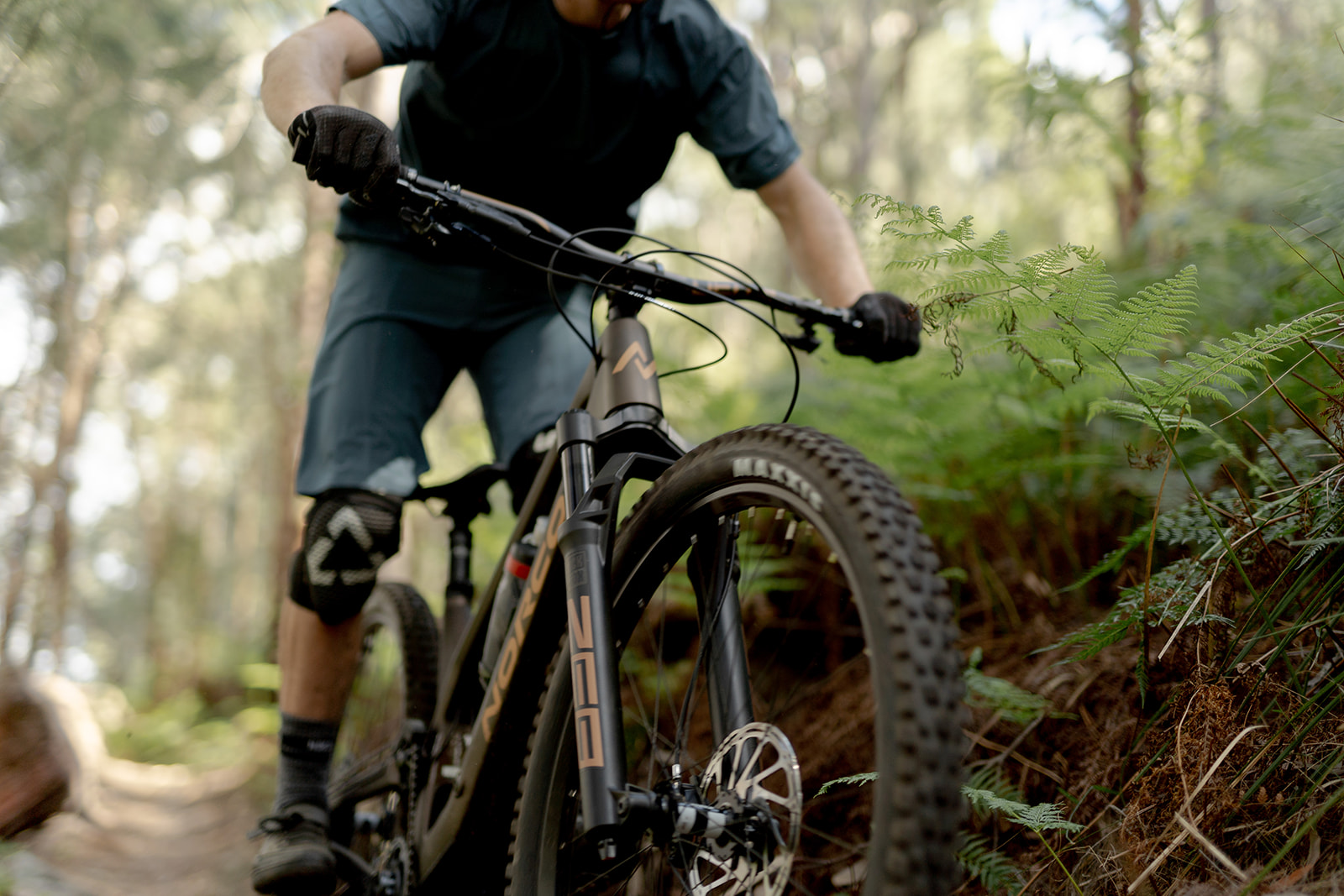
Beyond basic sag recommendations, a select group of bike brands do offer set-up charts or calculators, but on the whole, consumers are left to figure out how many clicks of rebound or compression damping will make their suspension hum. And advice on volume spacers or spring weight, ha, good luck.
Norco has taken a different approach with its well-polished Ride Aligned web app. This provides granular setup guides covering everything from suspension tuning, to how many spacers you should run under your stem. The recommendations can even be tailored based on your skill and where you generate power on the bike. And what’s even crazier is that the numbers it spits out are pretty darn close, without having to employ any sort of telemetry devices or doodads that need to be purchased later on.
But Ride Aligned goes well beyond suspension setup and demystifying clicks and air pressure for the masses.
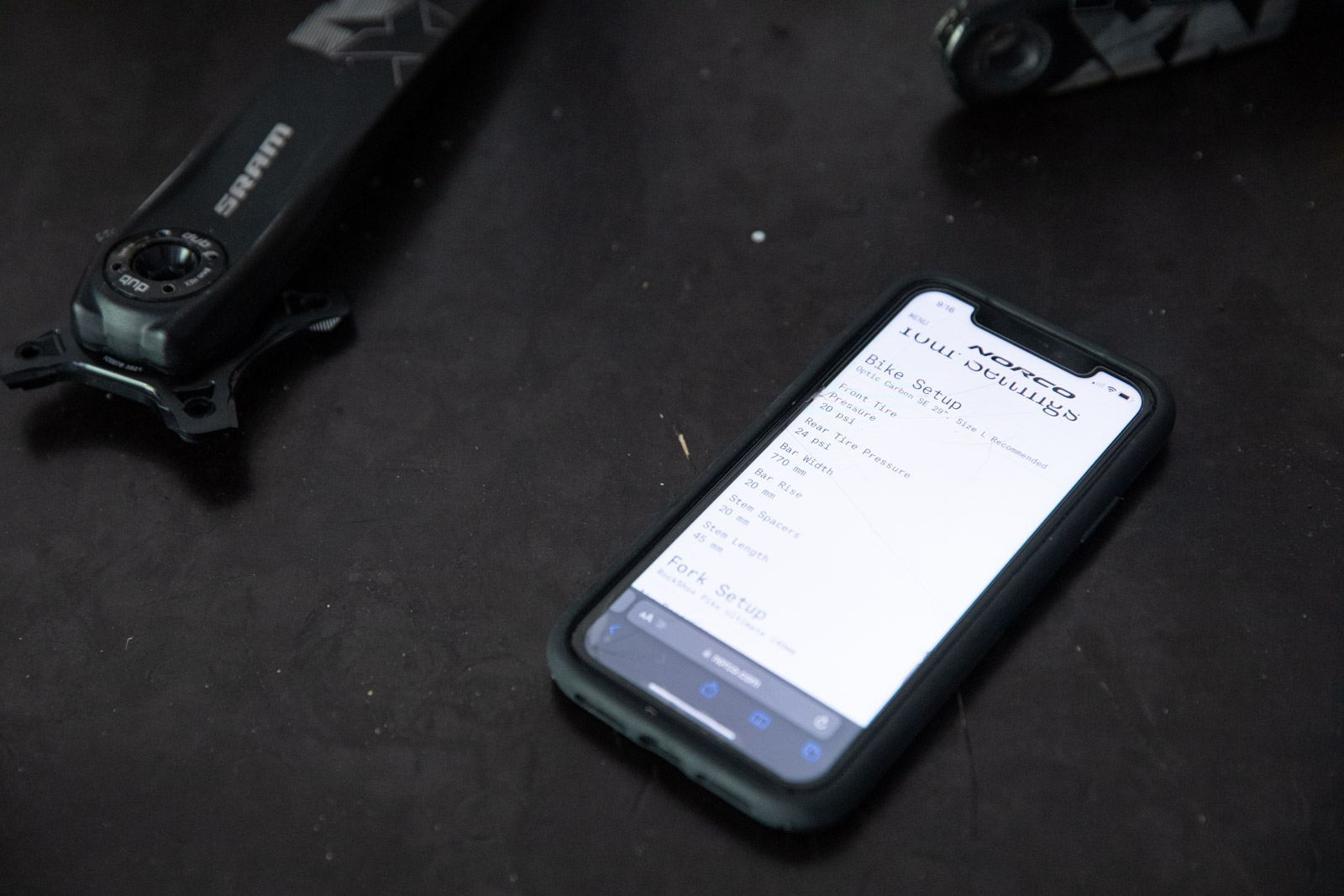
What is Ride Aligned?
Ride Aligned is the foundation for everything Norco does, from geometry and how the bikes fit to suspension kinematics and sizing. This manifests in the highly detailed setup guides for bikes across its range.
“We’d launch this bike that we thought was great, and then the feedback and reviews would be all over the place. We’d ask about their setup, and they were also all over the place. Now (with Ride Aligned), we have consensus, at least from feedback, because we’re controlling the setup,” says Cox.
The basic premise is looking at where a rider’s centre of gravity sits between the wheels and analysing the way that a person’s height, weight and body proportions affect that position.
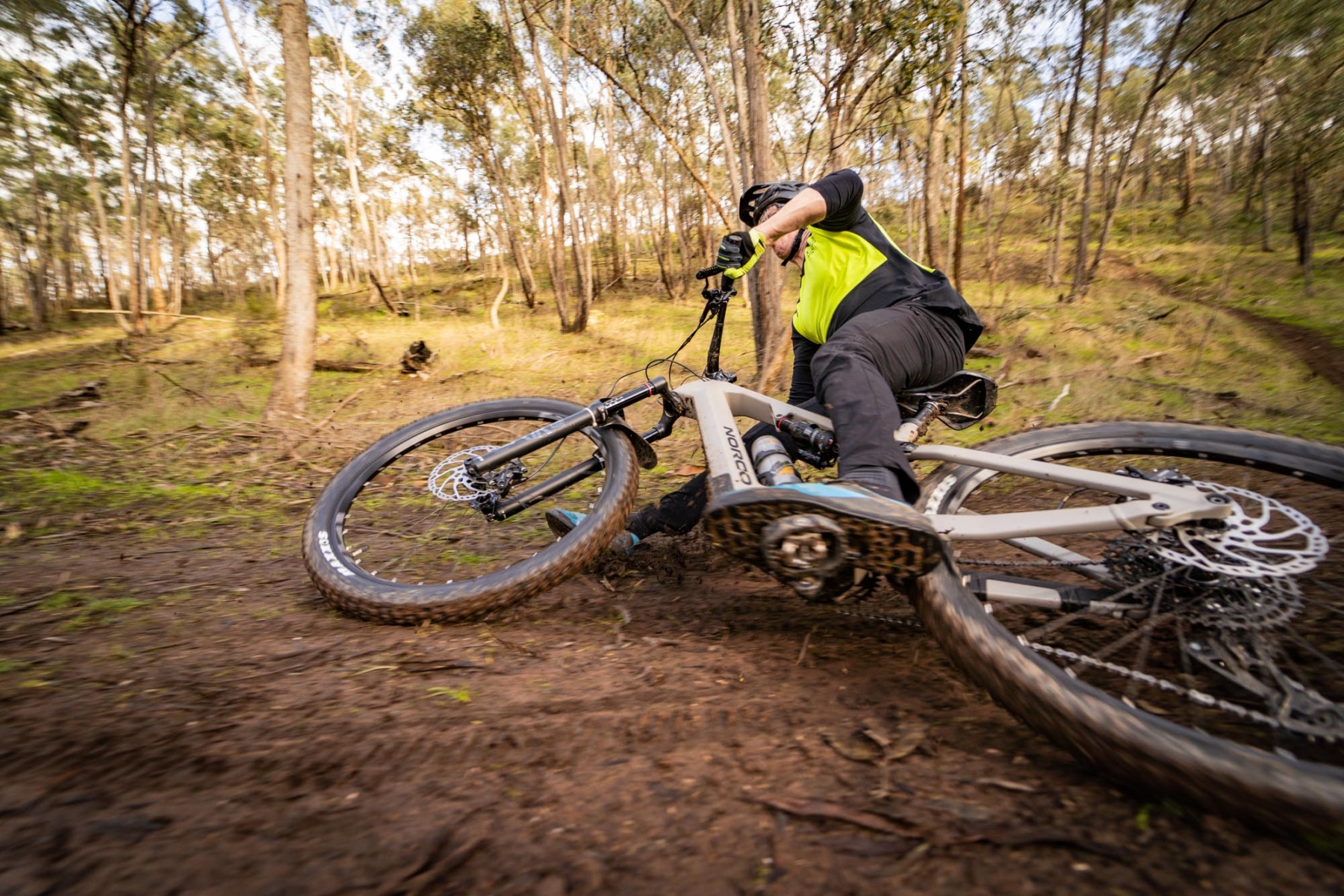
“We’re trying to maintain consistent weight distribution (across frame sizes). So we’re looking at frame sizes and the differences in front and rear centre proportions (among other things) and how that influences the suspension performance and the settings we recommend in our setup guides,” says Ryan.
What the consumer sees out of all of this are detailed bike setup guides. Ride Aligned is not the only one of its kind, but Norco’s approach is a little different.
Rockshox Trailhead will give you pressure and rebound for any of its products based on your weight and what type of bike you’re riding — e-MTB or naturally aspirated. Trek has a calculator where you plug in your weight and bike model, and it recommends pressures, rebound, compression settings and even tyre pressure.
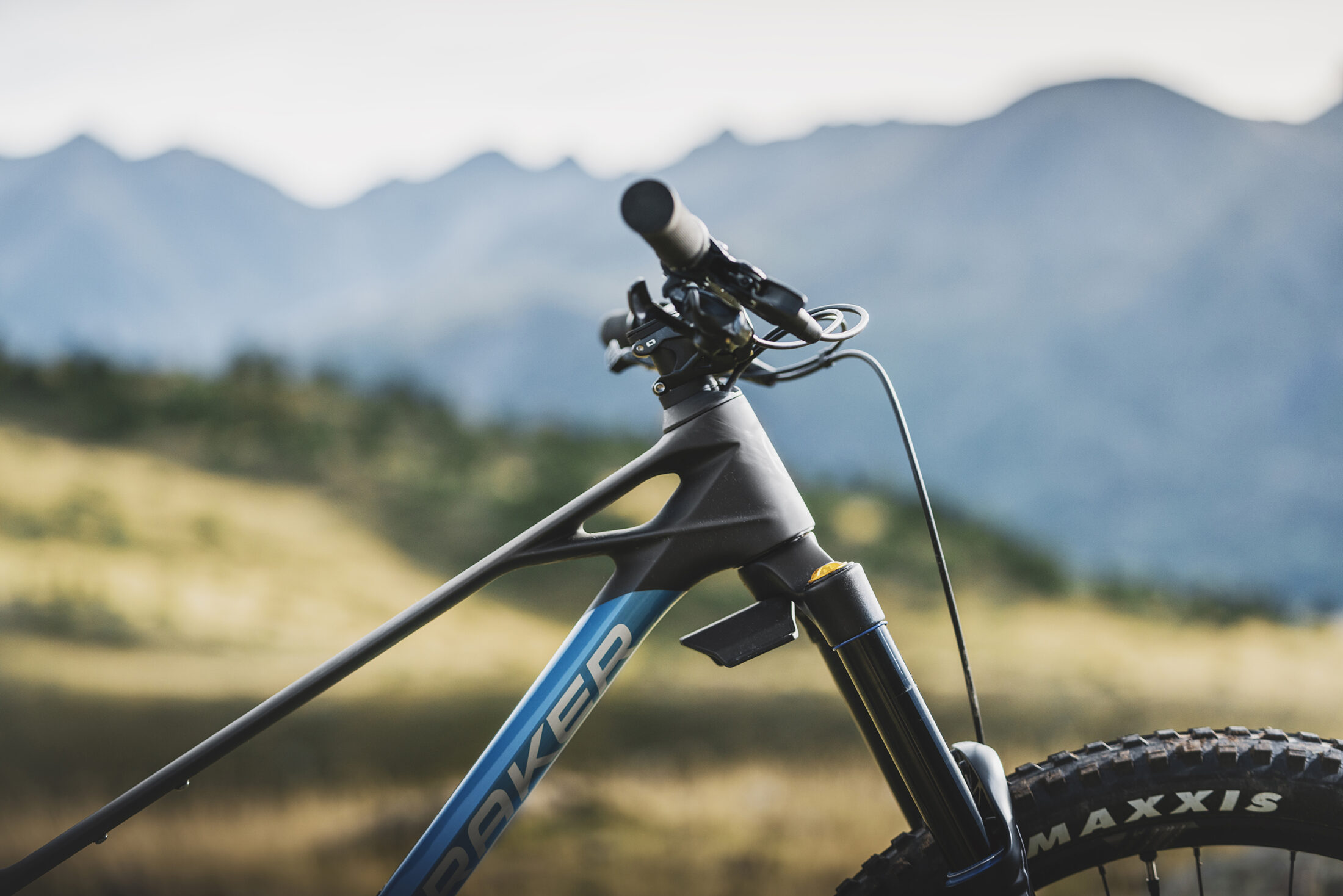
Then, of course, there are things like Mondraker MIND, a built-in telemetry device that will show you precisely what your suspension is doing as you ride, but leaves it up to the rider to figure out what to do with that information.
The elephant in the room is ShockWiz, which takes telemetry information and presents it in clicks and PSI — at a cost of $600AUD, and it only works with air springs.
To its credit, the latest iteration of Ride Aligned offers as much — well, actually more — detailed information than ShockWiz. In our experience, it gets you to a baseline where a set-and-forget rider will be getting excellent performance from their suspension — with no extra cost outside of the bike.
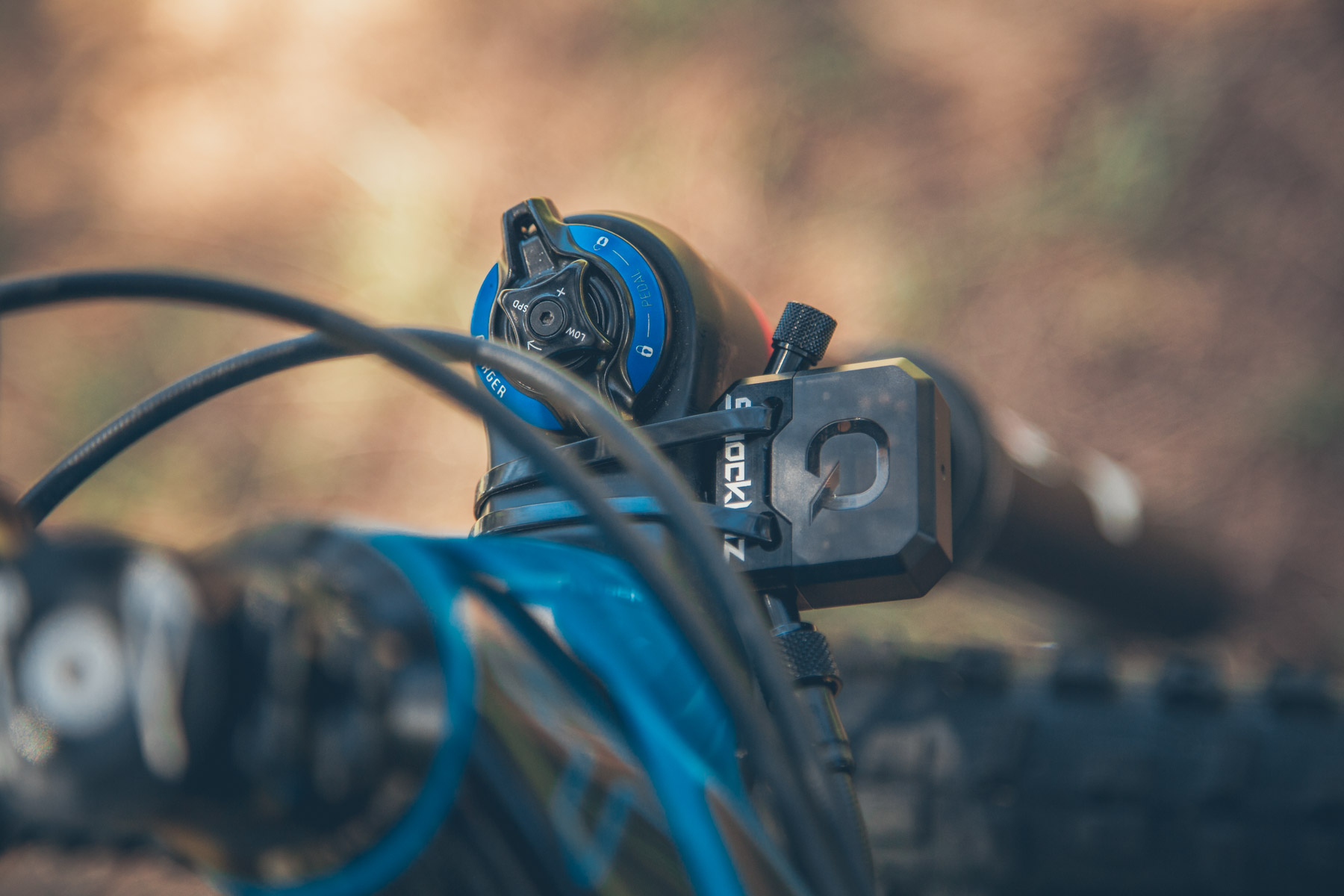
Where do the recommendations come from?
Ride Aligned was introduced with the current Optic and Sight models, but the development started well before these bikes came to market. The concepts had been simmering for a number of years, but the big shift came with the launch of the Revolver XC bike.
In his life before Norco, Cox was a Project Engineer at McLaren. When designing supercars, they would look at anthropometric census data based on a person’s average proportions to find where to place them in the cockpit. These resources were initially developed for putting people in tanks and planes.
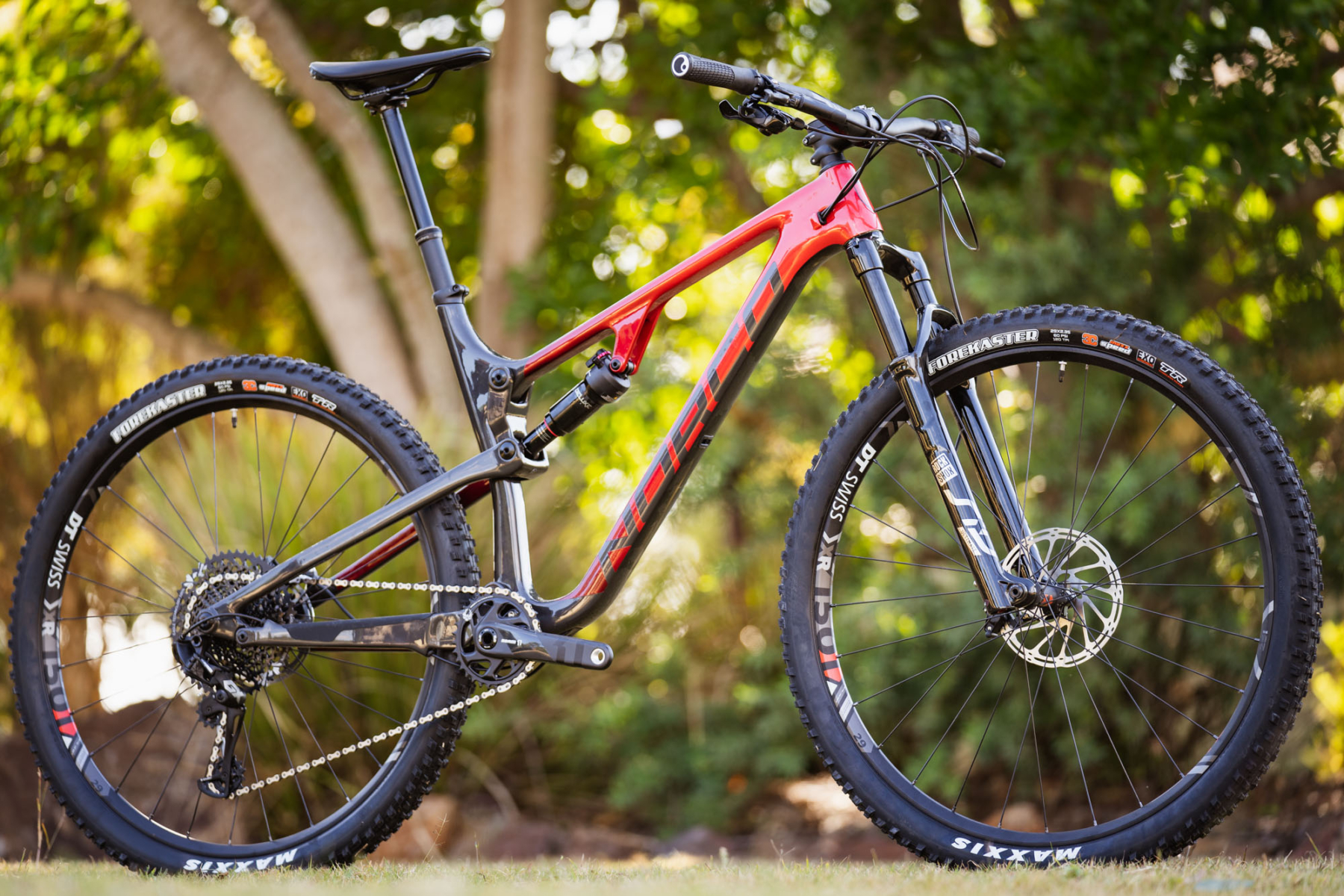
“They have seated and standing height, but also vision angles and things like that. In the automotive industry, we’d use similar data for putting people in sports cars — if you need to hit a corner apex, you need to be able to see it. Or if you’re working at IKEA and you designe desk chairs, you’d start with the same sort of thing,” he says.
These averages of human proportions allow the engineers to plot people on bikes and say if a person is this size, they would have about this arm span, and it will put them in this position. They can then take that information, scale it across frame sizes, and get a consistent baseline position. Cox notes that this is just a starting point, and some of the data, while interesting, is not entirely correct. This is why bikes aren’t mocked up in BikeCAD and then sent straight to the factory.
All of this is validated by reaching into a pool of pro riders, employees and bike testers and putting them on different-sized frames, chopping and changing cockpits and looking at how it affects body position. Ryan also tells Flow that Norco uses 3D scanners and a ‘scale rig’ that positions scales under the front and rear wheels.
“This allows us to measure ride height front and rear, and then also the rider’s weight distribution for different suspension settings,” he says.

In all fairness, we’d bet a large sum of dollarydoos that Norco isn’t the only brand-designing bikes this way. But it’s also the only brand that uses this research to recommend finite fit parameters like bar width and how many spacers you should run under your stem.
The three biggest mistakes people make in suspension setup
With all the data sets that Norco has on suspension setups and the real-world testing, the engineers have a pretty good handle on what trips folks up. And the biggest comes from outdated technology.
“One of the big ones that we see, even though we try to emphasise it on the website, is people still using analogue shock pumps for setting up air springs,” says Ryan. “We work in one PSI increments. That level of accuracy is something you might think only a high-level rider is going to pick up on — that’s not the case.
When we test with people from our department, and outside of our department that are beginner and intermediate level riders, they are picking up on these changes,” Ryan continues.

The other big mistake that Cox and Ryan see is people not equalising correctly. There are a few boutique shocks and forks where the positive and negative air chambers are inflated separately, but the vast majority have a dimple or some other way for them to equalise.
“Especially on large volume air shocks, if you don’t equalise the shock properly when you go out for your first ride, all that positive pressure is going to equalise with the negative. And the pressure you’re running in the shock is going to be quite different to what you think you’re running,” Ryan says.
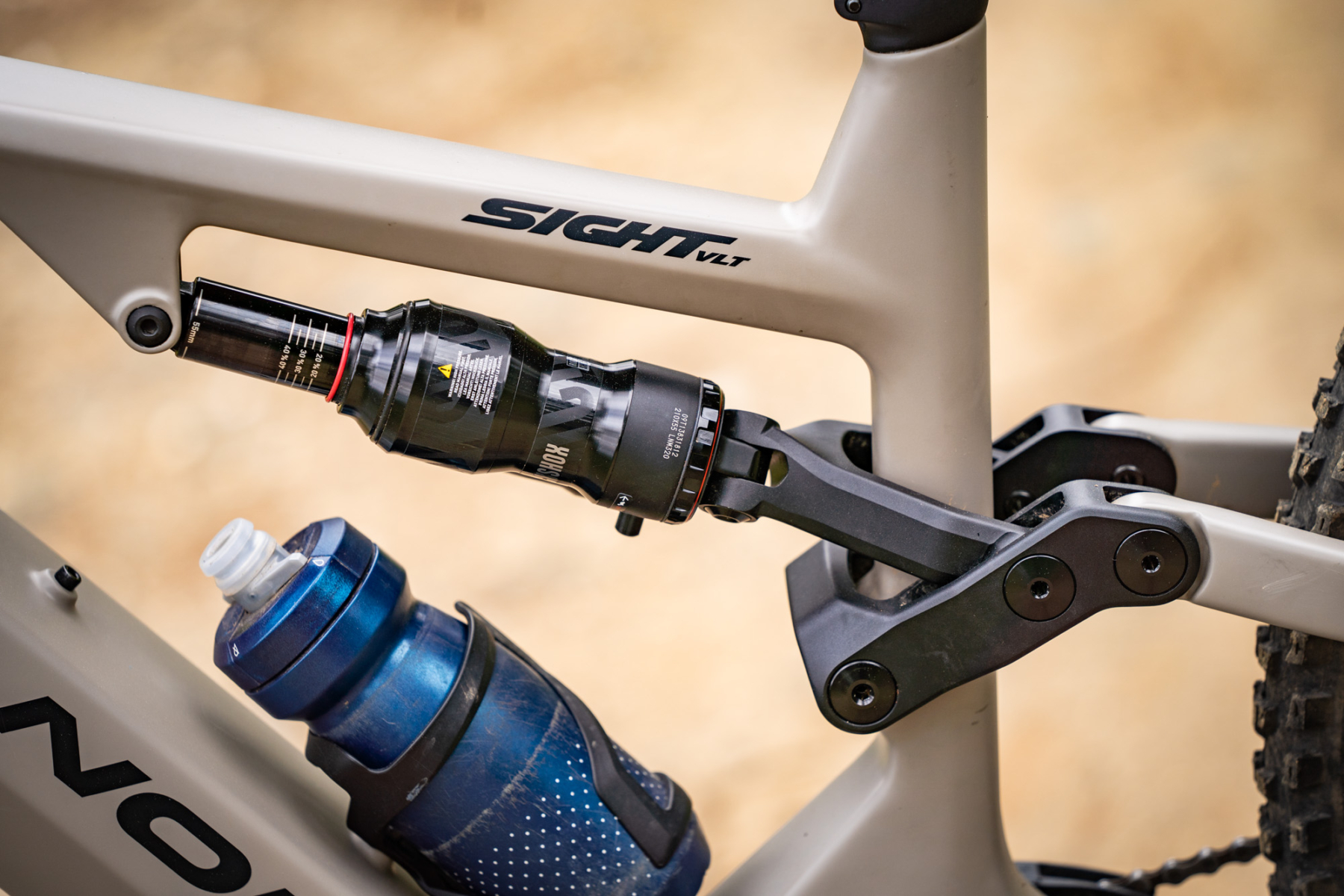
The final area where people get tripped up is not counting clicks correctly.
“That’s kind of on us to continually improve and make it clear because there are so many different fork and shock models and manufacturers, and everything is slightly different,” says Cox.
An evolving riding alignment
The prompts for most suspension setup calculators are what bike and how much do you weigh? For Ride Aligned, they are bike, height, weight, skill and sex. That last one is especially interesting, as the bike industry has largely moved away from men’s and women’s specific mountain bikes. The caveat here being that there are still women’s versions of some bikes — Scott Contessa, Santa Cruz/Julianna, and Norco have historically offered a women’s version of some models. Usually, these amount to paint and touchpoints, however sometimes they also include different shock tunes.
When the Norco team started looking at the anthropometric data, it suggested that men and women were built differently. Further data from early testing, and evaluating how folks within the Norco umbrella set up their bikes seemed to point to there being something here, and led to ‘sex’ being included as an input parameter for Ride Aligned.
“We use a few different data sets, but men generally hold their weight higher up in their body and generate power on the bike through their upper body. Women are generally the opposite and generate more power and force through their legs,” says Cox. “When we developed the first iteration of our Ride Aligned data set, we really wanted to offer this, but it didn’t play out as cleanly as we expected.”
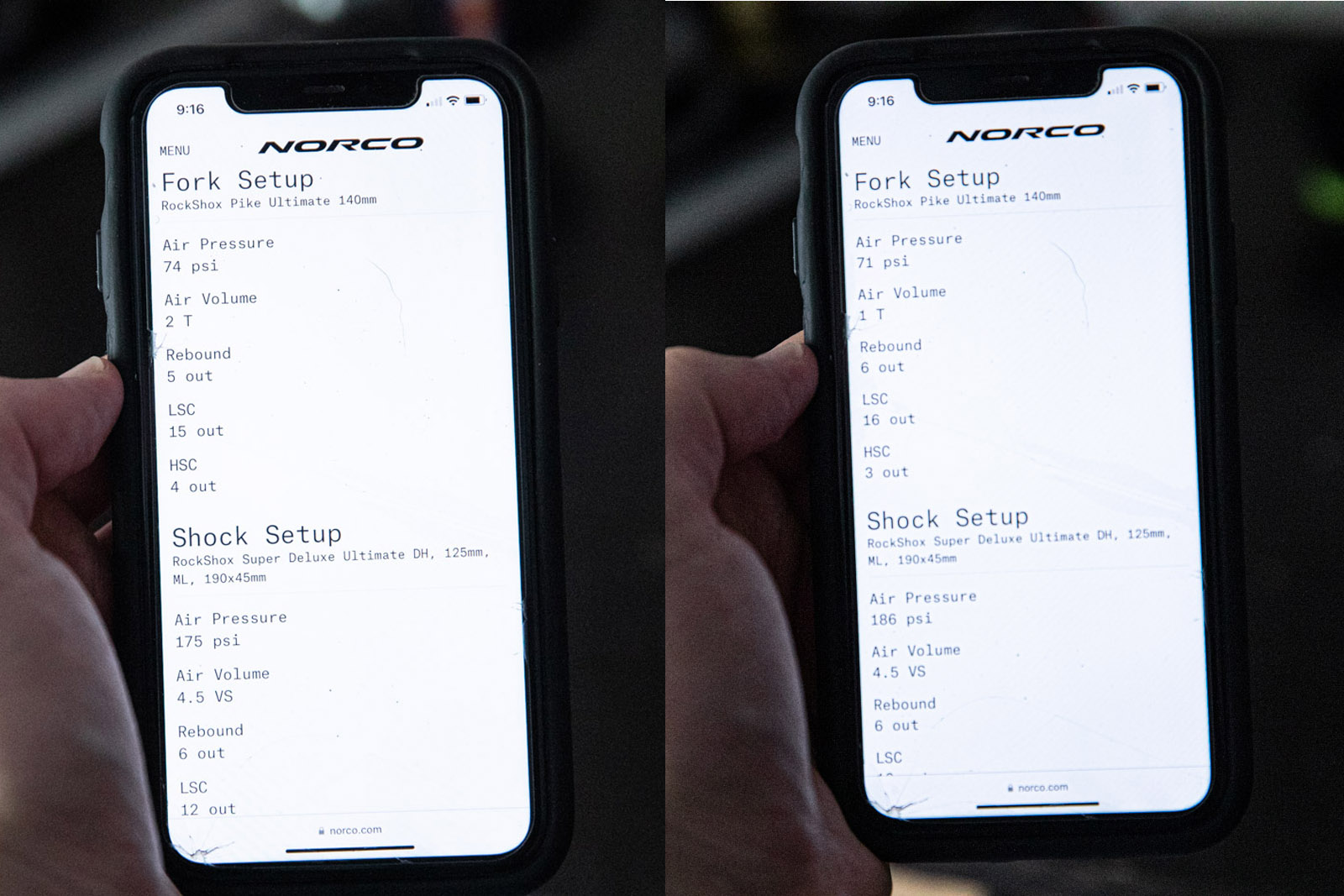
Cox didn’t know the exact percentages off the top of his head, but these sex-based recommendations established by that initial dataset turned out to be wrong a lot of the time. The way they had interpreted the data to have two distinct male, and female suspension setups proved to be less accurate than they’d hoped and didn’t translate all that well in the real world. This led to the Centre Forward and Centre Rearward setup options in the app, with descriptions of how it changes the feel of the bike.
“As we start to build out more Ride Aligned setup guides and we have more users, we’ve built up our own dataset, which ends up being more accurate. We found that the data sets we were looking at initially didn’t totally line up with the mountain biking community for whatever reason. The more we expand Ride Aligned, the more users we get, the more useful information we can then iterate and improve set up guides in the future,” Ryan says.
As an interesting anecdote, when setting up my personal Norco Optic, being a male, Ride Aligned recommended the Centre Forward option. However, I can generate significantly more grip using the Centre Rearward recommendations.
Based on what they have learned from continued testing and looking at how people are using the Ride Aligned recommendations, Ryan tells Flow that Norco is looking at doing away with the sex input and relying just on the Centre Rearward Centre Forward option.
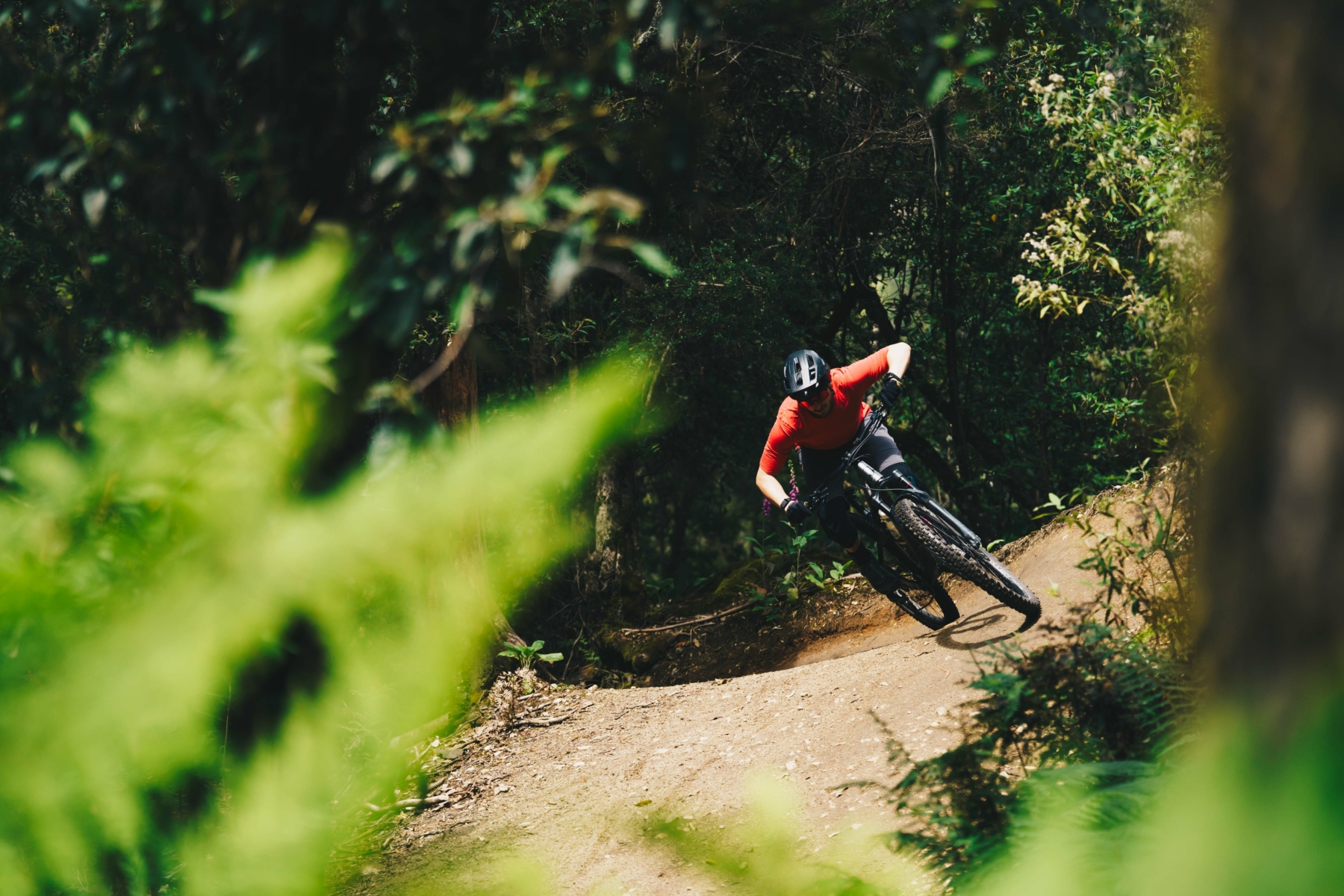
A similar evolution has happened on the Rider Skill parameter within Ride Aligned, which is a slider with options from beginner to professional.
“It adjusts what we call a soft/firm modifier, so it really works primarily off spring rates on most specs — either spring rate or air pressure. So it either firms the bike up or softens the bike based on skill level,” says Ryan.
This all happens within a range to not throw ride height or dynamic geometry out of whack. Rider skill is necessary for finding the all-important baseline for suspension, as beginners and experts thrive with slightly different parameters. But similar to sex-based recommendations based on general patterns, Norco has found its rider skill-based suggestions also needed to evolve.
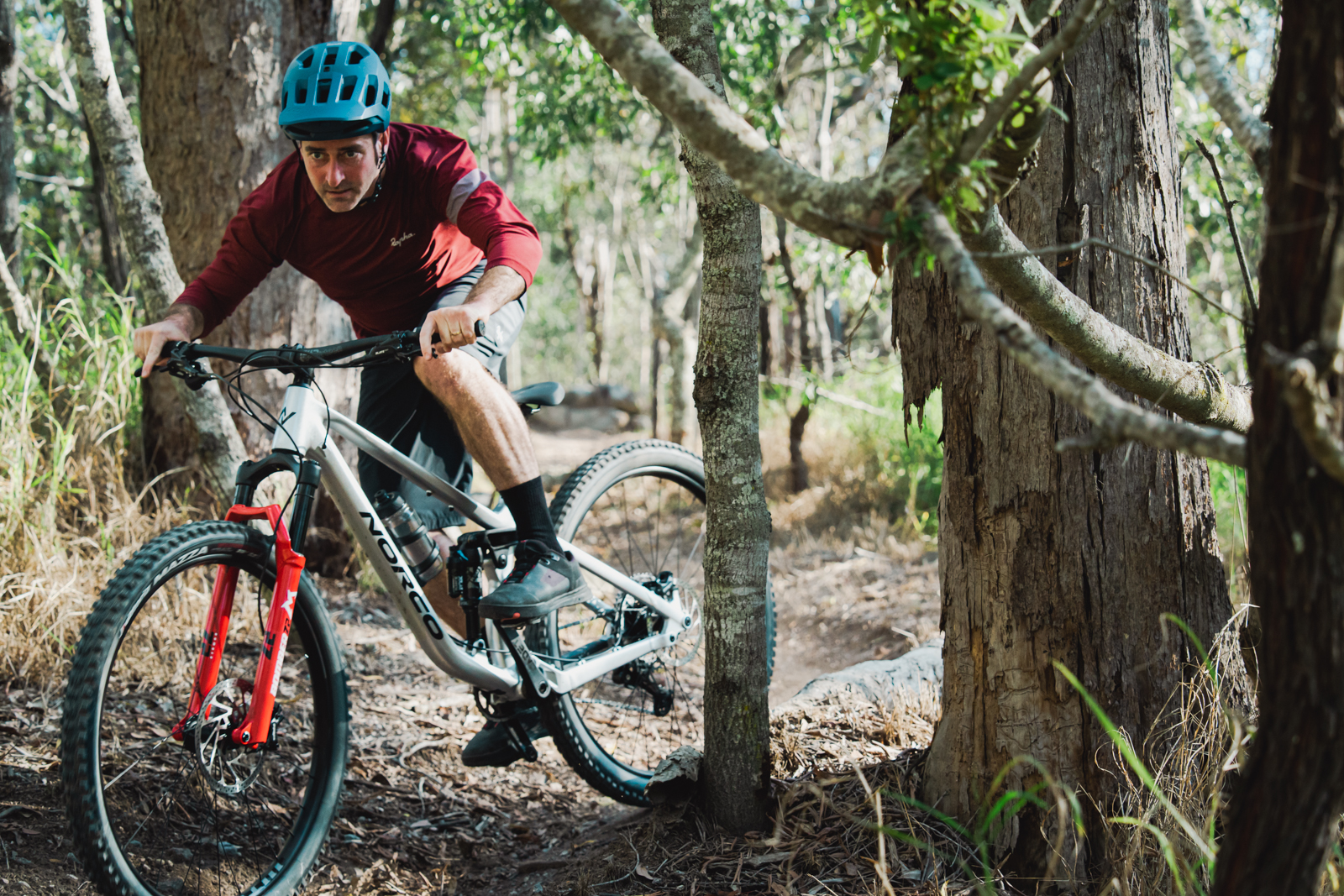
According to Ryan, for Norco’s Swiss distributor, the terrain and what Ride Aligned was recommending didn’t match up. In order to get the bikes to work in the terrain they were riding, they needed a softer bike. And so, they would have to use a lower skill level setting to get the bikes soft enough.
“It wasn’t a case of mischaracterising skill level, it was just the terrain,” Ryan says.
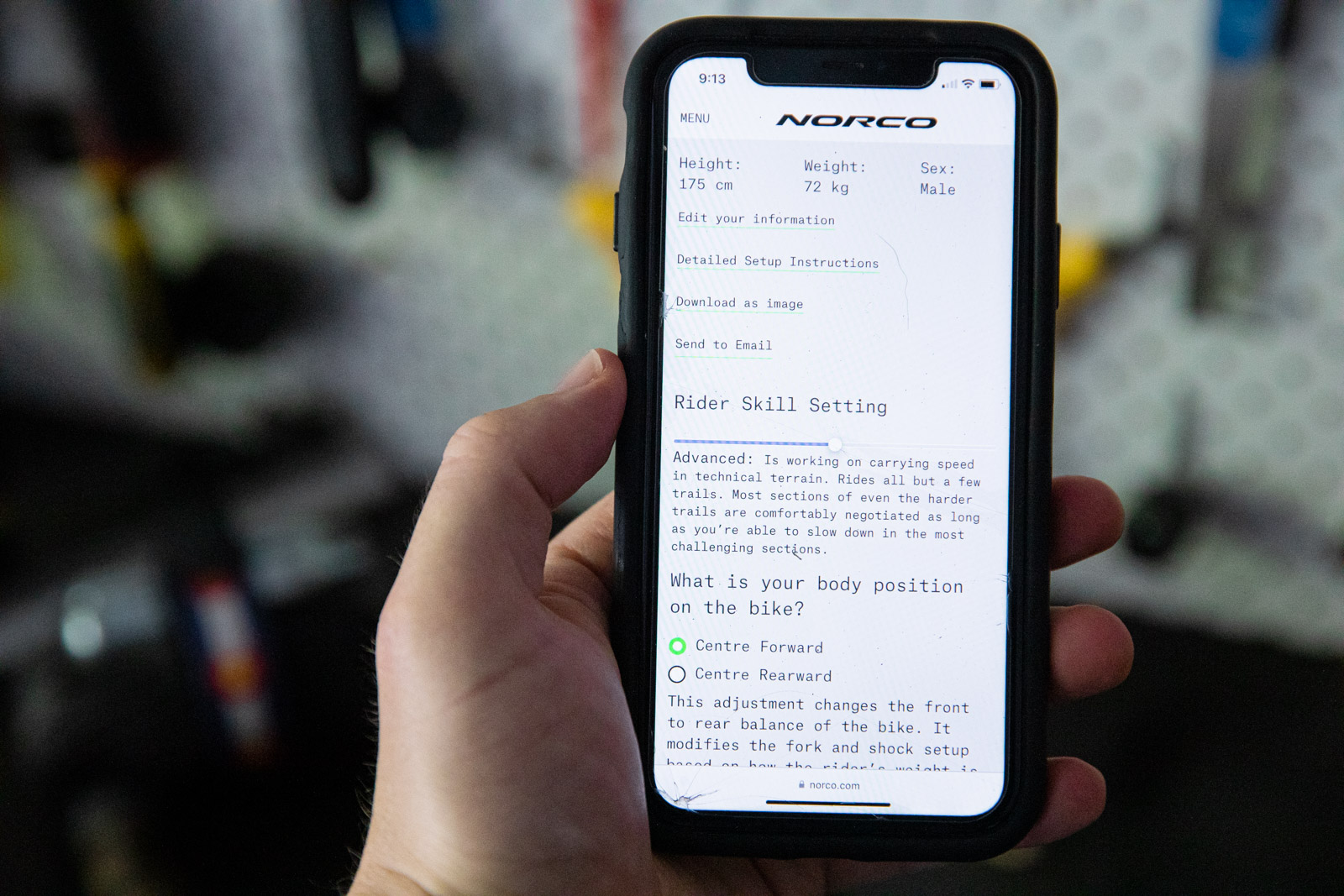
And so they’re again rethinking the way these parameters are presented.
“What we’d like is to give people more options to provide feedback on whether that setup is working for them, and then tailor or tweak their setup if there is something that’s not working.
So asking how does that feel? Does the bike feel too soft? Here are a few things that you might feel, and here are some indicators that it’s too firm. And then adjust on an as-needed basis, (based) on feedback rather than listing a single setup for a skill level,” he says.
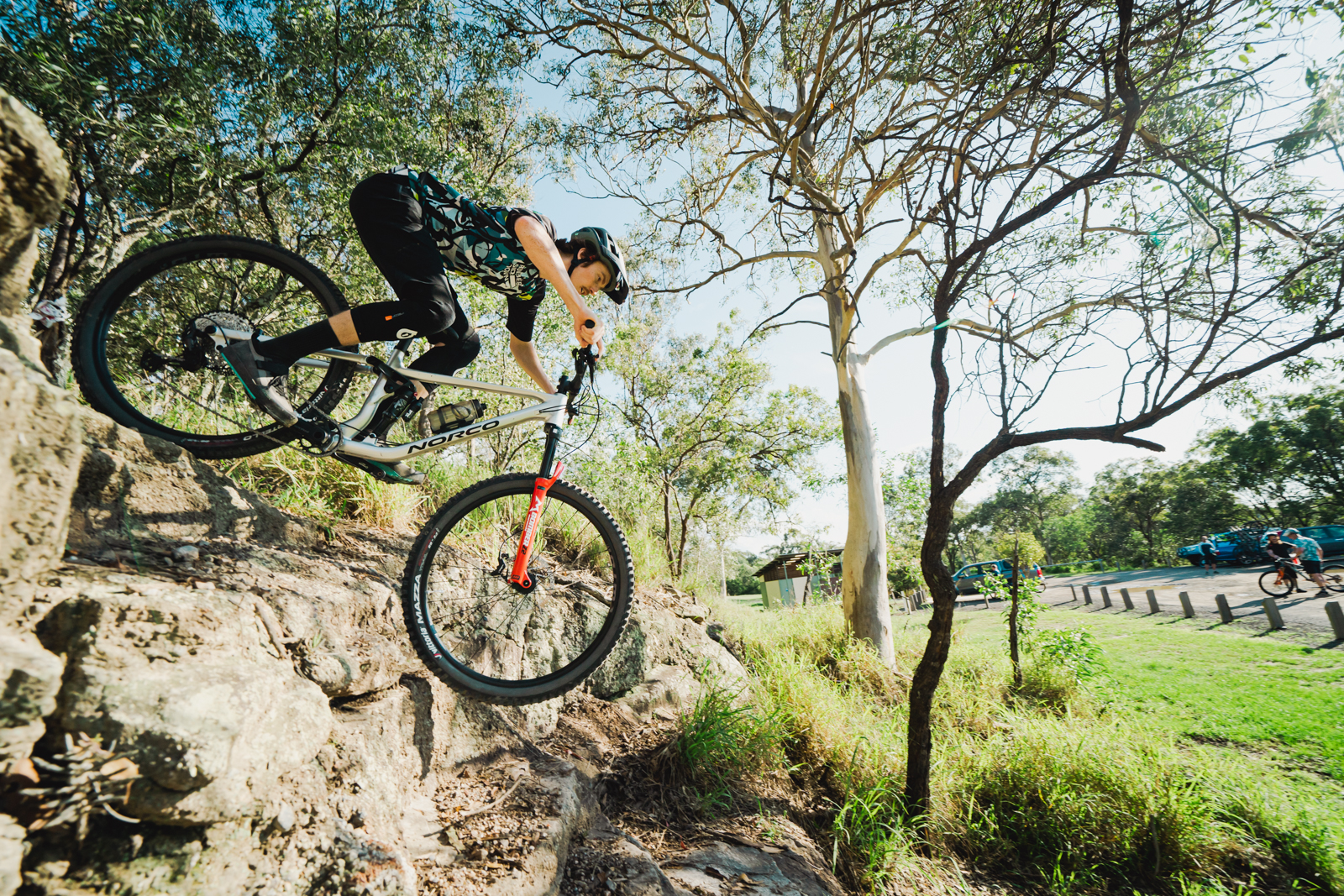
A holistic approach to geometry and kinematics
Bikes are more than just a number, whether that be rear travel, anti-squat or reach. That last one, in particular, has become a bit of an industry buzzword in recent years, with a number of bike brands moving to reach-based sizing. Rather than packing bikes into Small, Medium, Large, folks are being encouraged to choose bikes based on reach, depending on the ride characteristic they’re after.
Norco’s size recommendations still package folks into S, M, L, etc, and also tend to suggest a longer reach than most of its competitors.
“There is no one geometry number in isolation that is going to make a bike ride a specific way. Two bikes can have the same reach number, but if they have significantly different bottom bracket drops, that feet-to-bar measurement ends up being different, and those bikes are going to ride totally differently,” says Ryan.
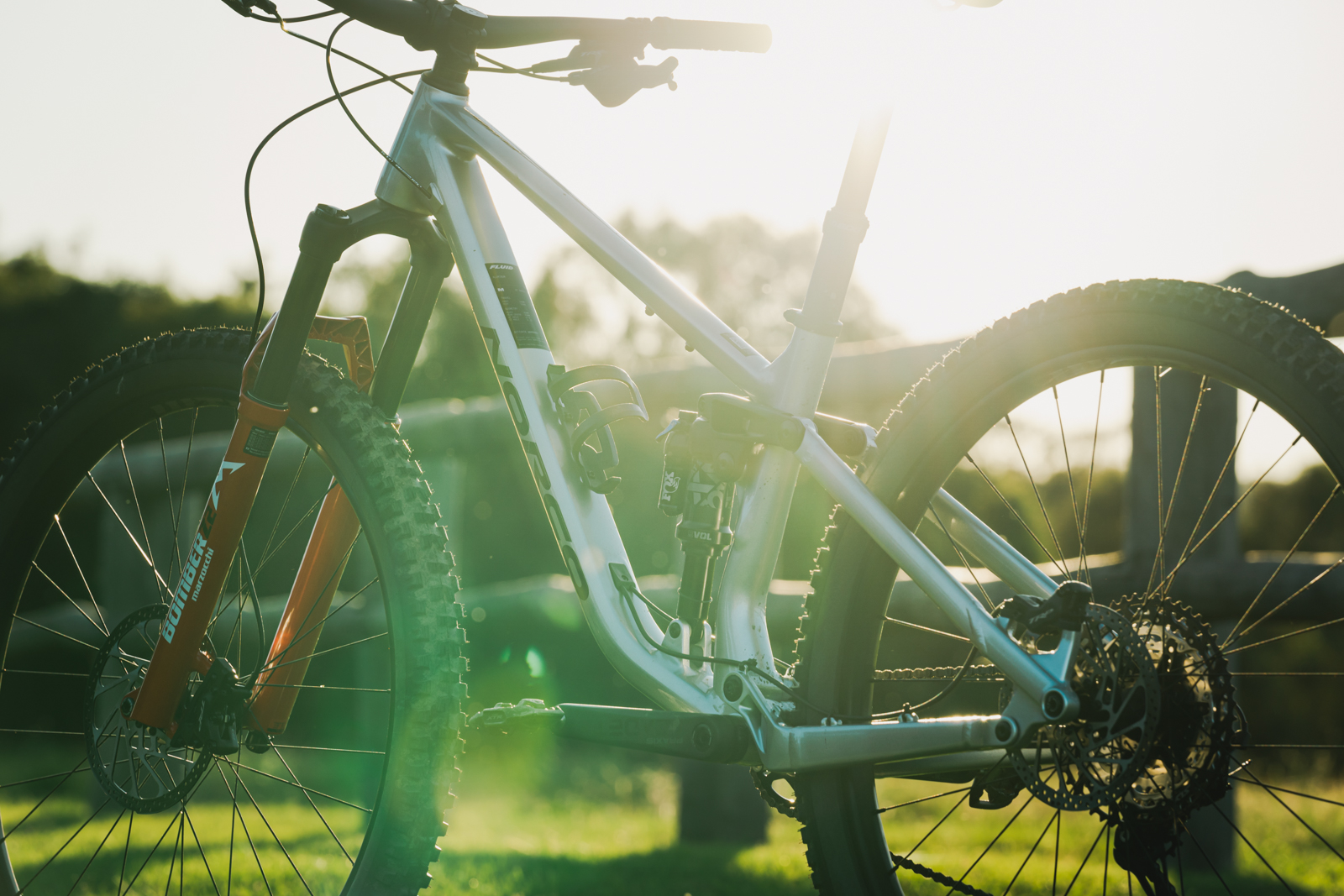
There is a lot of chatter about reach, but a line on the geometry chart that is of equal importance to sizing and ride quality, which is all too often neglected, is rear centre.
For as long as we can remember, Norco has used size-specific rear ends on its bikes. As legend has it, the genesis of the scaled rear centre started with the Dirt Norco Team going on 15-years ago. The exact details of who said what are a little foggy, but the story goes that Dan Stambridge, who is tall, and Ben Reid, who is not so tall, reportedly wanted their Aurum DH bikes both longer and also shorter.
So the engineer they were working with at the time said, “well, maybe you should have different rear centre lengths.” And thus, the size-specific rear ends were born.
“It’s really critical to having a ride that feels the same way across all the frame sizes rather than making the medium and large pretty good, and not quite right for tall guys and girls and not correct for smaller guys and girls,” says Cox. “It’s a lot more complicated (to do size-specific rear centre length) and certainly more expensive.”
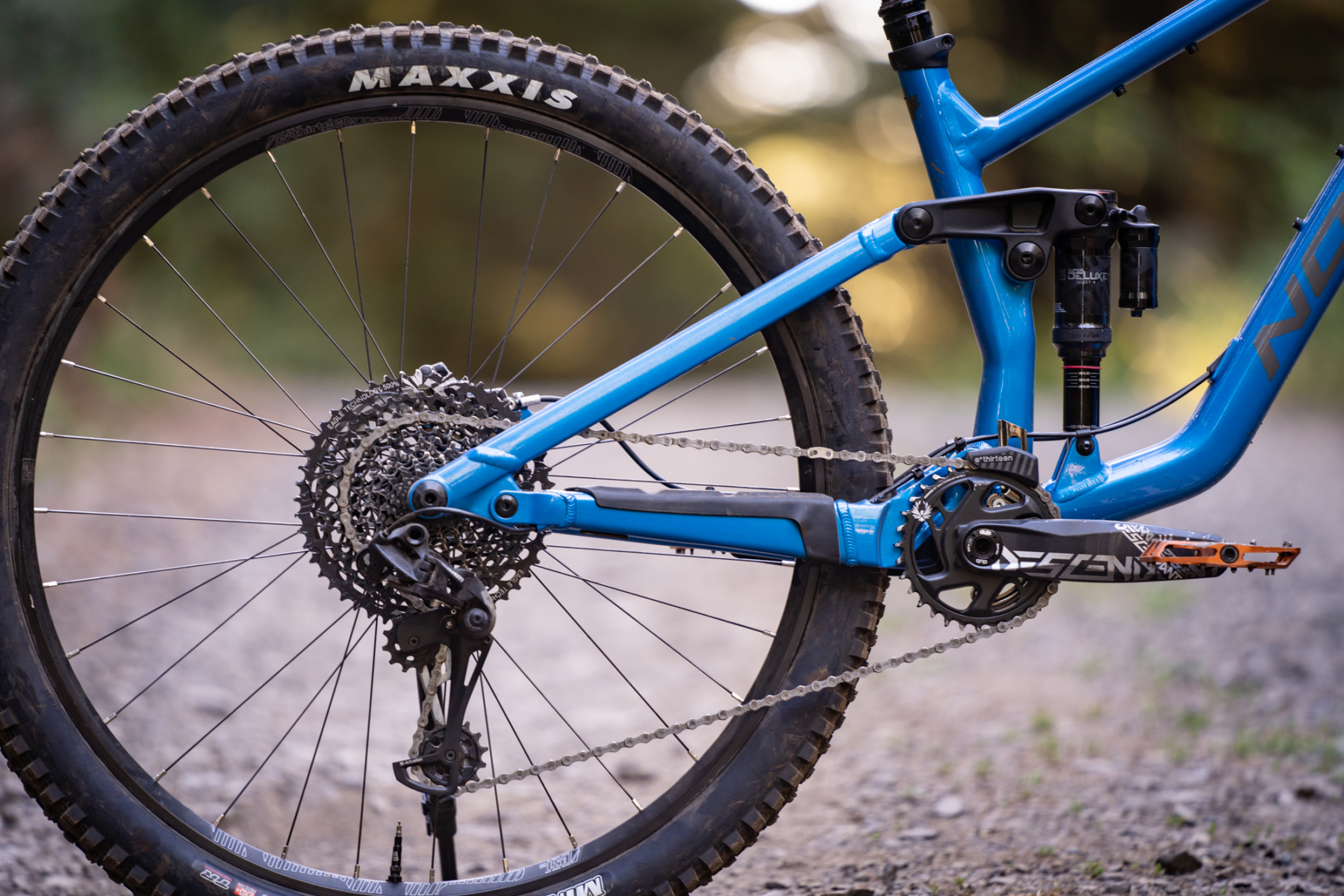
The price and added manufacturing complexity are likely why the majority of brands will utilise one or maybe two rear centre lengths from Small to XXL. Nearly every frame, small through XL across Norco’s range, has a size-specific rear centre length to maintain the rider position between the wheels. But it’s more complex than simply adding 5mm to the chainstays in each size.
“We see people putting flip chips in the rear end of bikes, but that changes your kinematic because you’re making a longer leverage arm,” explains Cox. “Generally taller people want a longer rear centre, so they get higher leverage, and they’re generally heavier too.”
While simply wanging a flip chip in the rear dropout or extending the chainstays can be a simple way to keep the proportions of a bike the same through the size range. It also blows the shock tune because the kinematic has also changed.
Norco’s approach takes the kinematic points — BB, main pivot, rear axle, horst pivot, rocker arm, shock — and moves everything in conjunction to maintain the same kinematic performance across frame sizes. On the new Range, Norco even goes as far as making size-specific linkages to maintain consistent suspension characteristics.
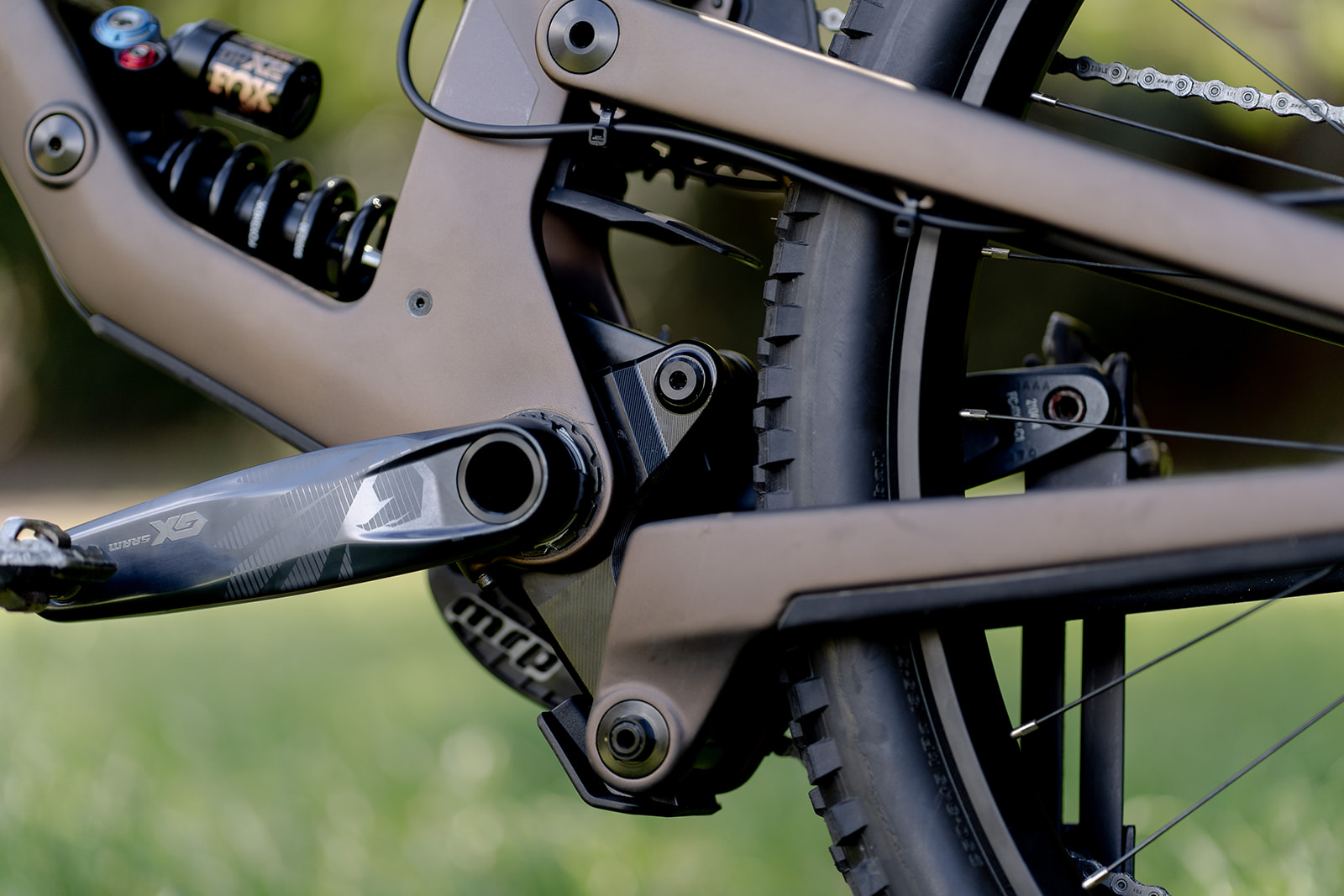
This adds to the manufacturing costs because they have to create additional tooling and moulds. But not in the way you might think.
“In carbon, you just have to make different moulds, and you can just do whatever you want. But for aluminium stuff, we’d generally make bikes with forged or machined parts and tubes. So we’d make the BB and main pivot into one nice little forging. But then, if you want to move the bottom bracket relative to the main pivot, well, it’s one piece, so you can’t do that. So then you have to open up five different forgings, which makes the cost go way up,” explains Cox.
Looking at Norco’s new aluminium Fluid, where the rear centre length from the S to XXL changes by 40mm, that would have required quite a few changes to the layout of the pivots. This makes not only the performance of the rear suspension and the price point even more impressive.
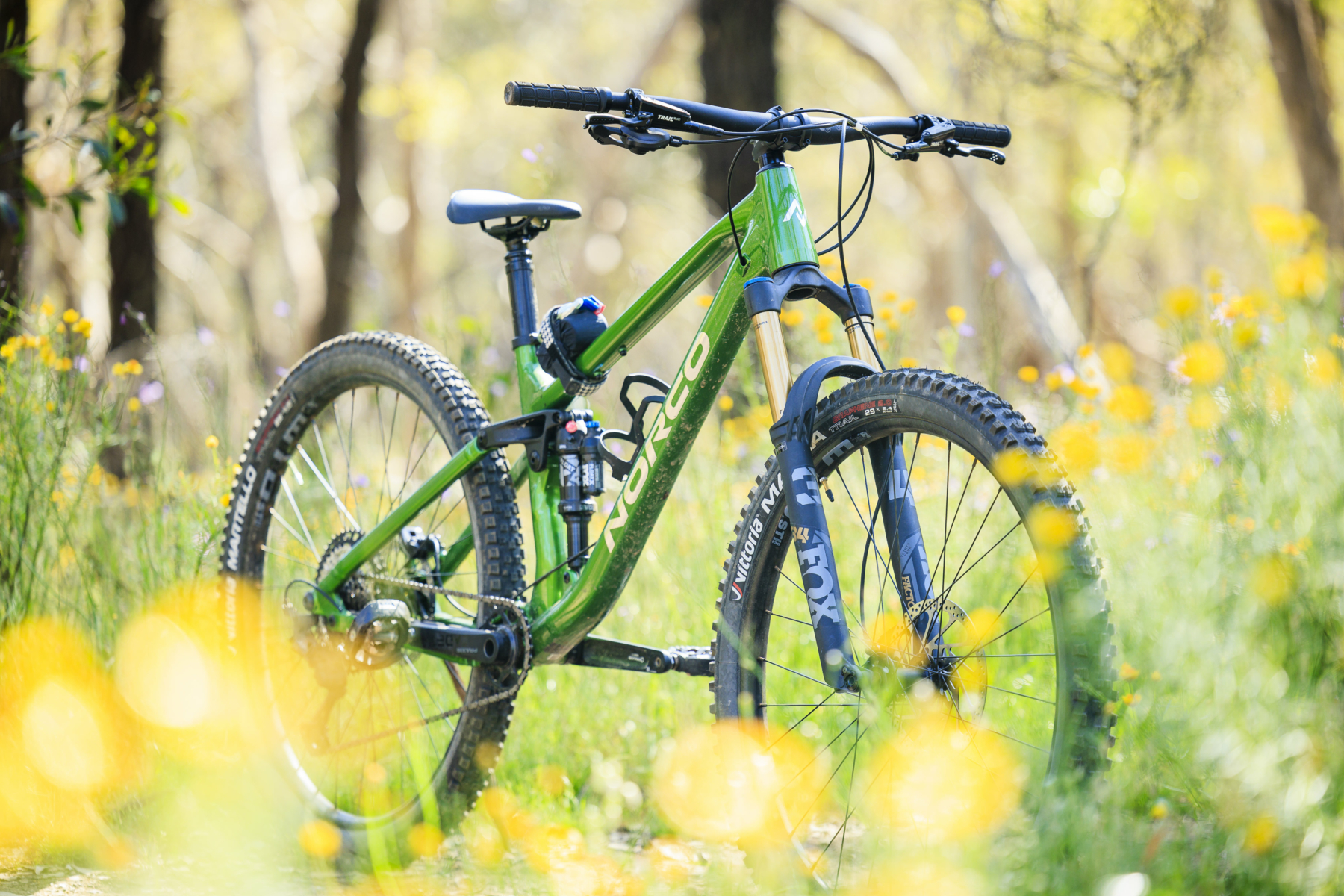
Not-so-flippy chips
The latest crop of bikes are embracing adjustable geometry. With everything from headset cups to flip chips in the dropout, shock mount and rocker arm, riders can customise every aspect of the way their bike feels.
Norco’s bikes, on the other hand, are largely devoid of geometry tweaks save for the Aurum, which offers reach adjustment. According to Cox, this is largely because they want changes to be meaningful but also can’t compromise anything else in the process.
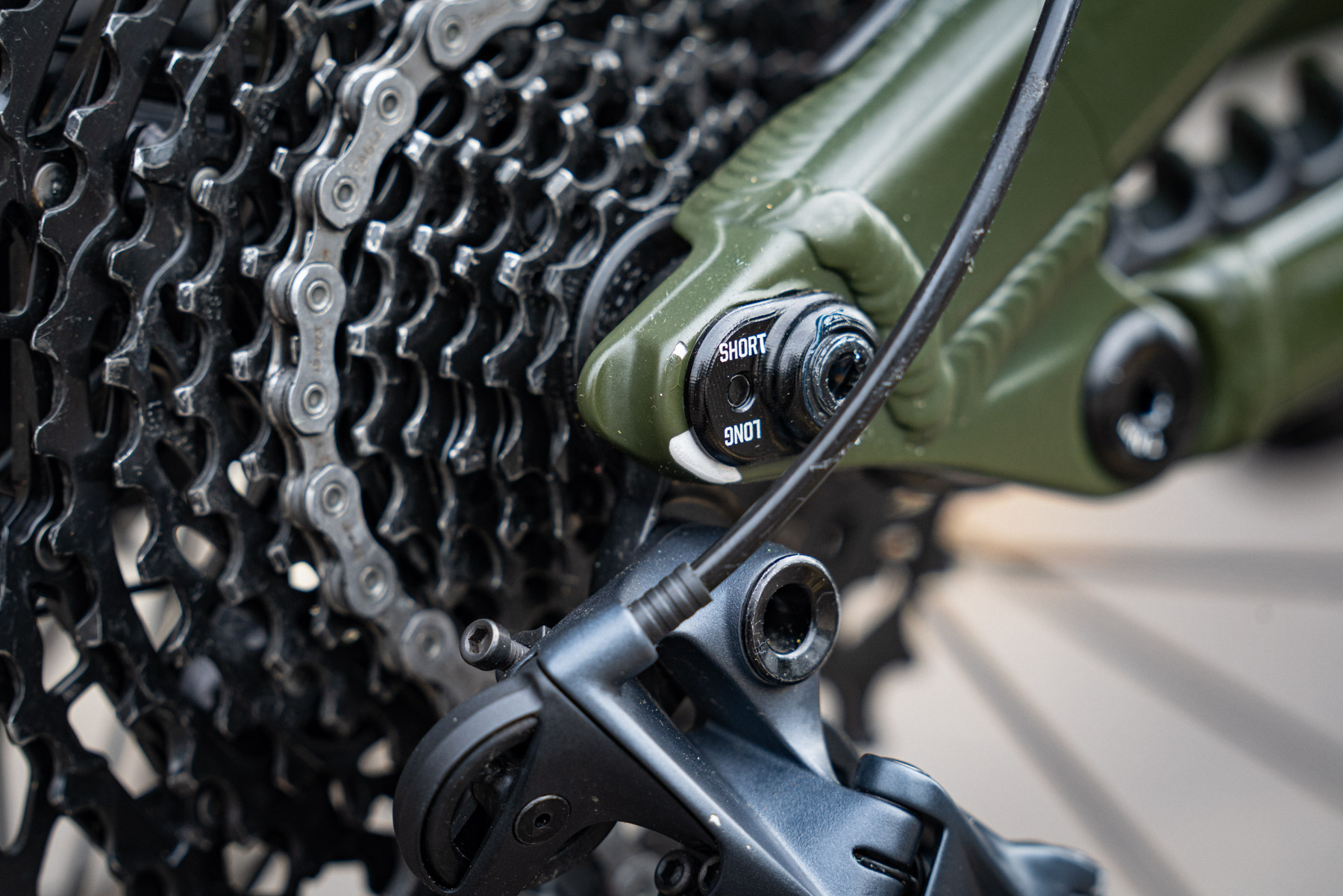
Again this all relates back to Norco’s focus on Ride Aligned.
“It’s difficult to design some of those geo or kinematic adjustment features in isolation. What we’ve found is you might design a flip chip in the rear axle that allows you to adjust rear centre, but that then changes your leverage curve, which changes the spring rate, and then how well the damper tune works,” explains Ryan
“If you have all of these adjustments that change one thing and compromise something else, it’s nearly impossible to provide customers with accurate setup information,” he continues.
Cox notes that they take advantage of flip chips and geometry adjustment in the development phase, and you’ll find flip chips all over Norco test mules. So when they drop the BB or add to the rear centre, they can make three other modifications to compensate for the knock-on changes to the seat angle and spring rate.

While the brand has been flip-chip averse to this point on its production bikes, he also says it’s not something they are totally against down the line.
“We have a couple of cool things that we’re going to implement in future platforms,” he says.
The next big thing in geometry
With each new bike release, the tide has shifted from every subsequent model being radically slacker, longer, (insert buzzword here), to small, incremental refinements to a platform. This is not a bad thing because designers are starting to understand that specific geometry works well for different intended uses and types of terrain. But that doesn’t mean another revolution isn’t around the corner.
“The devil is in the details, and millimetres matter. The rear centre part, and the weight balance part, and the setup part all play into it, and there are still big gains to be had.
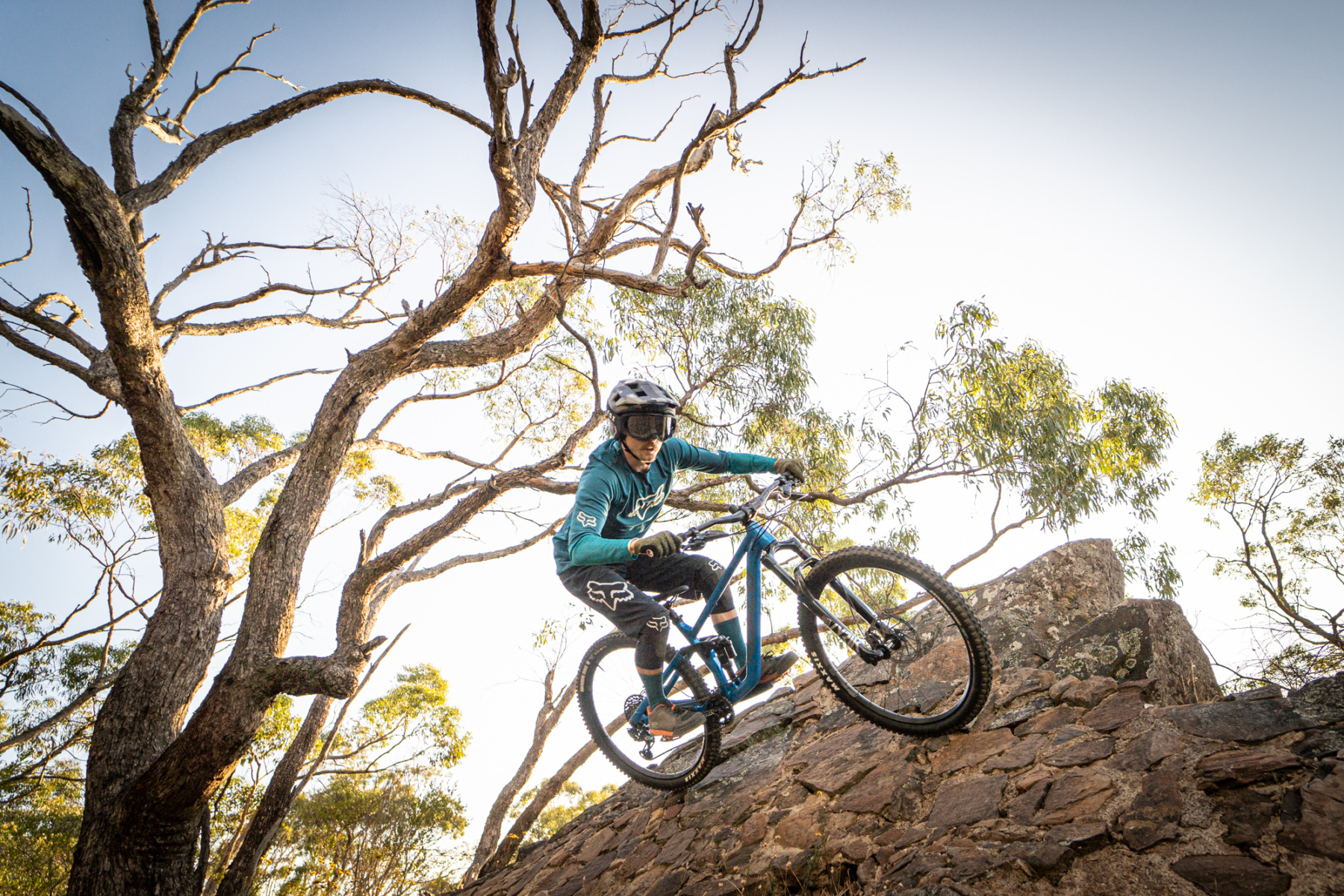
I think the way that we’re looking at mixed wheel sizes is a bit unique. At the moment, a lot of companies are taking a 29er bike and putting a little wheel in it, using a flip chip or just sort of making it work. I think it’s early days about getting that right and really getting the advantages out of it (the small wheel) and diminishing the disadvantages,” says Cox.
When pressed as to how Norco was tackling the mullet problem, he said, “stay tuned.”
While geometry numbers are stabilising when we talk about bikes in a particular category, according to Ryan, the same thing is happening for suspension kinematics.
“Everyone is kind of converging to similar sort of leverage curves, and progression is a big one as well. So when people talk about progression numbers, people seem to be converging on similar things as well,” he says.
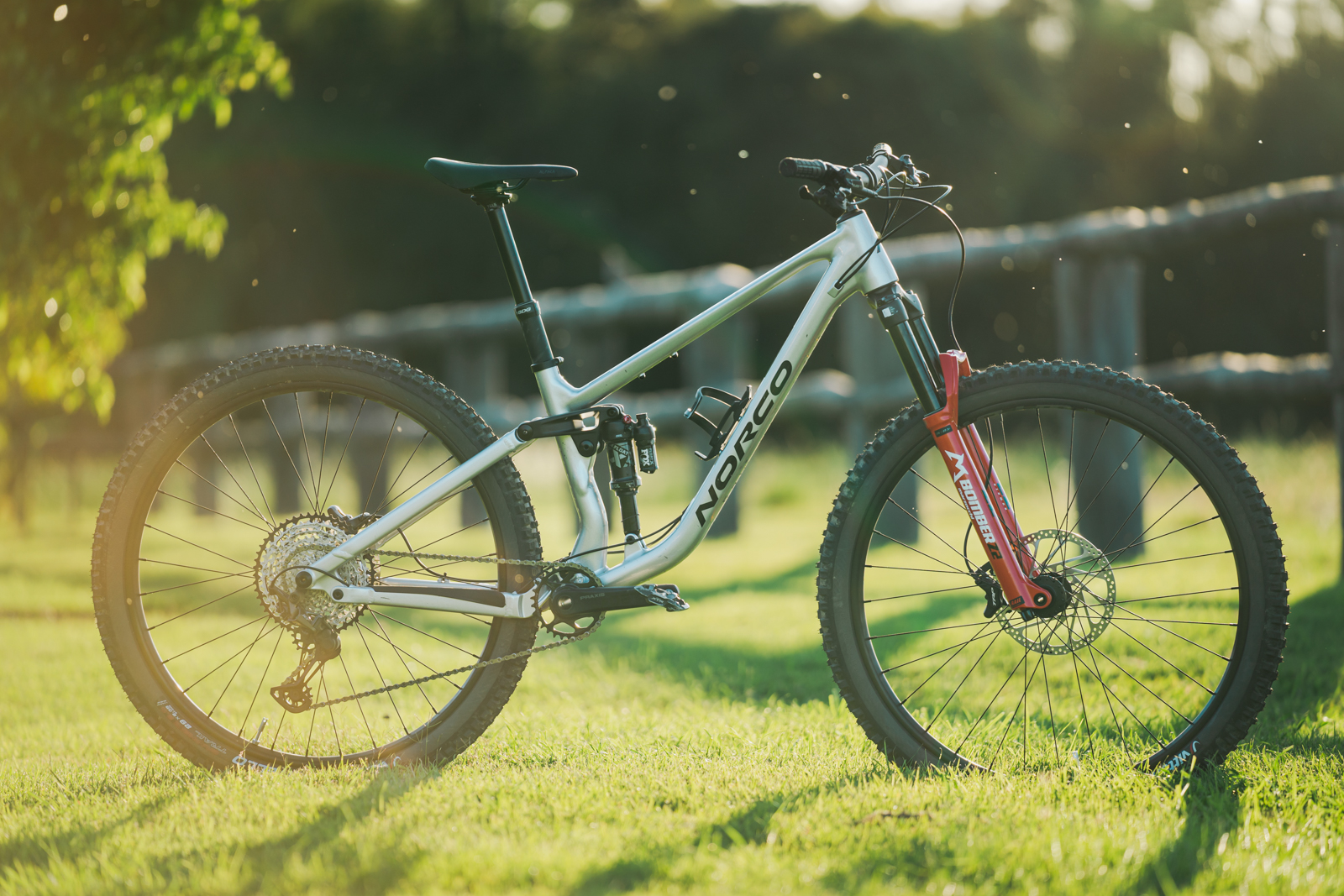
So with the mountain bike industry hurtling towards a common curve, Ryan tells us Norco is focusing on its suspension tunes, quantifying different damper tunes and air spring characteristics, rather than doing things by feel.
“We’re building our in-house knowledge base, so we aren’t just going off feeling,” he says. “Really looking at riders’ weight and body proportions and weight distribution, and recommending damping characteristics and the spring characteristics that get them the most consistent ride feel across the full spectrum of riders and frame sizes,” he says.
The example Ryan provided was again looking toward the latest Fluid, specifically the lower price point models, like the Fluid 3 and Fluid 4. These lower-end models feature rear shocks that don’t have much external adjustability — or oil volume — so getting the base tune right is critical, so it doesn’t feel like the rear end is full of sand.
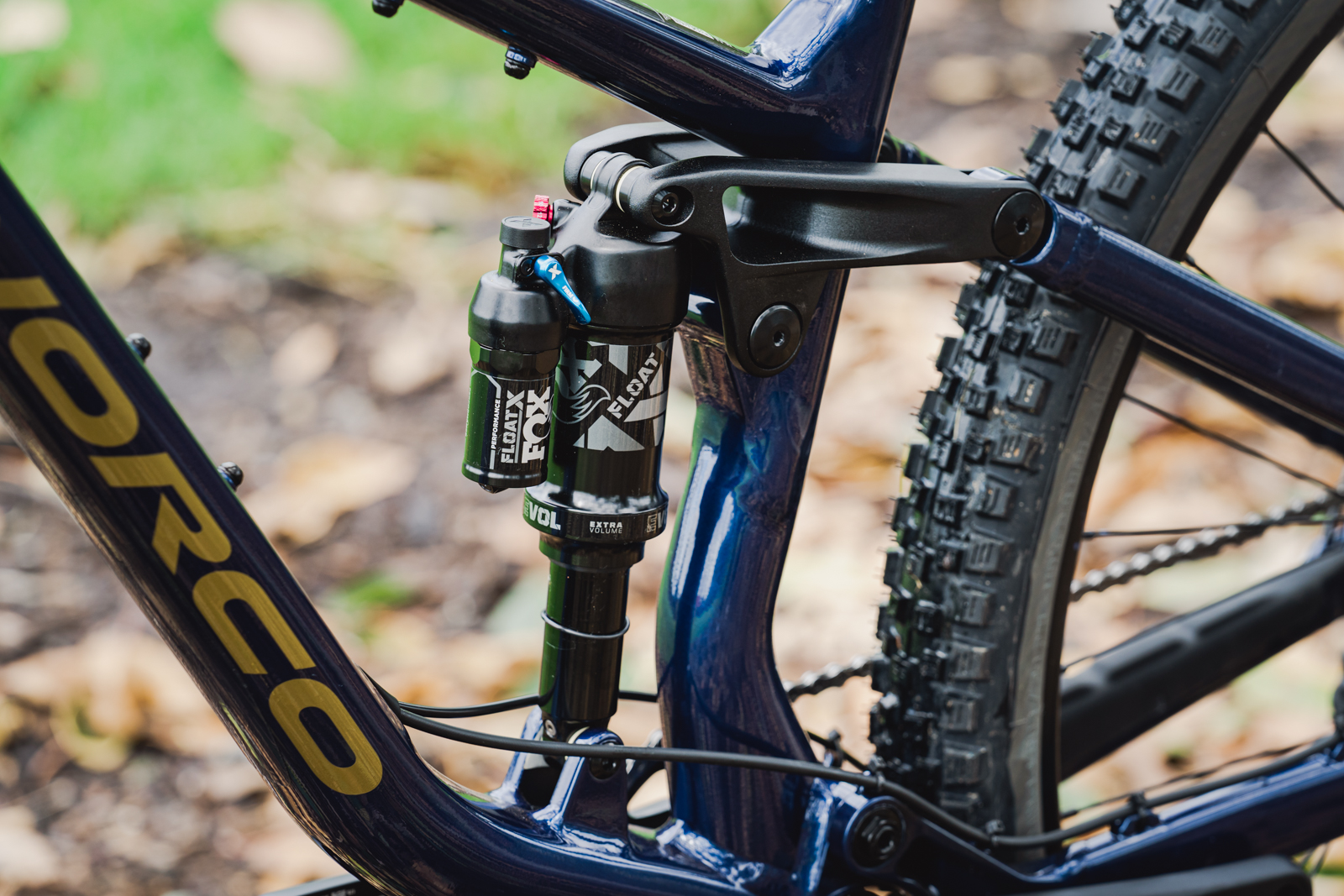
For Norco, Ride Aligned influences everything they do. While the consumer may only see the setup guide, behind the scenes, all the design decisions are made to ensure what that web app spits out aren’t as useless as the turn signal on a BMW.
Poor suspension setup can make a great bike ride like dog excrement, and punters are largely left to figure it out themselves. Ride Aligned, allows Norco to help folks set up its bikes the way the engineers intended. Given the importance of getting this setup right, it’s something we wish more brands would jump on board and do.